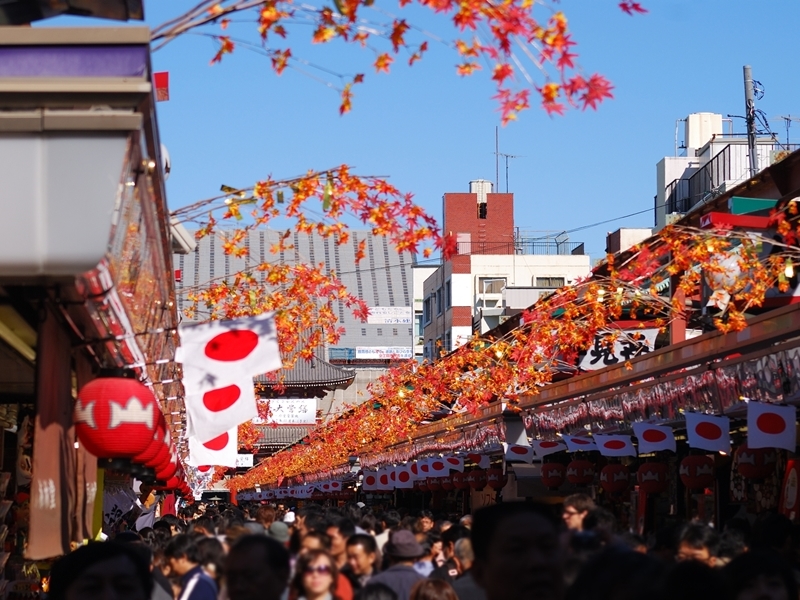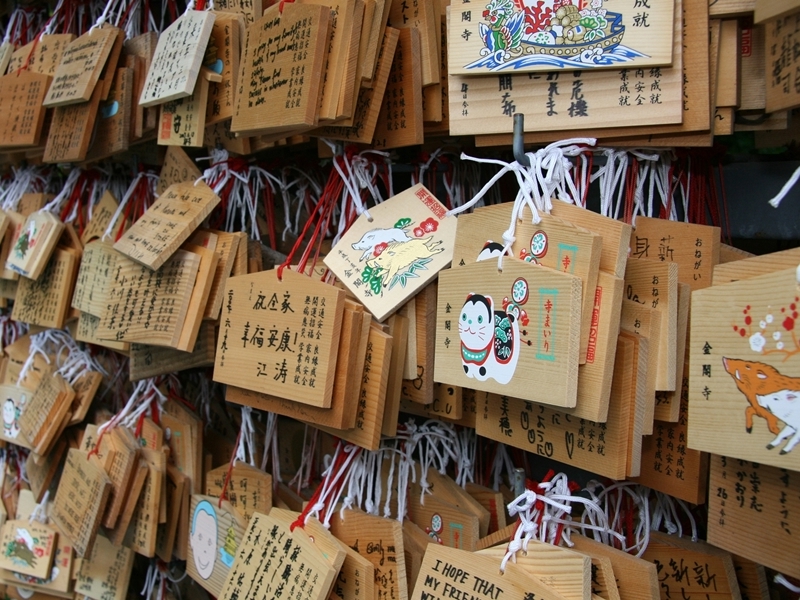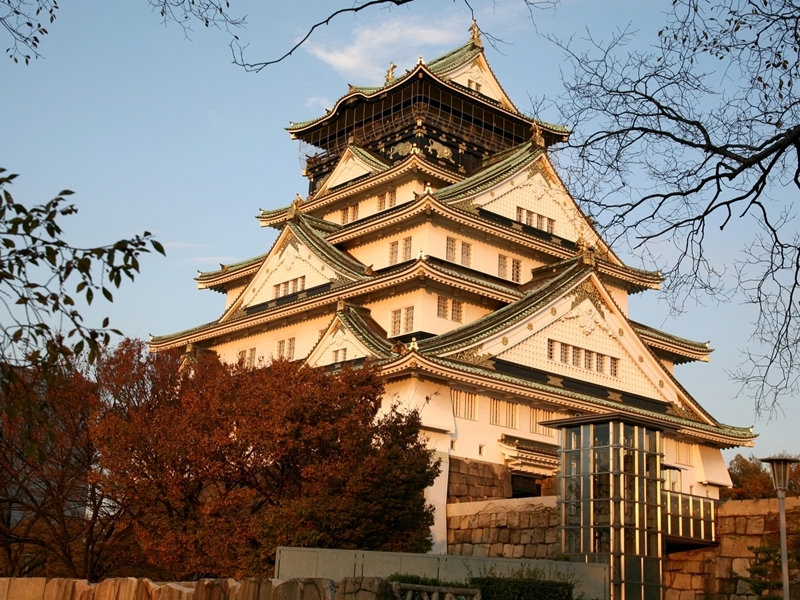Discover Japan’s cultural heartbeat on an art-themed journey from Tokyo to Osaka. Travel through the evolution of Japanese art, browsing everything from ancient temples and famous masterpieces to innovative modern buildings and contemporary art. Enjoy hands-on courses and memorable encounters for a deeper understanding of Japan’s rich traditional culture.
Itinerary
📍 Narita International Airport (NRT) to Central Tokyo: 1.5 h Haneda International Airport (HND) to Central Tokyo: 50 min
Upon arrival to Tokyo Airport, one of our representatives will be waiting to assist with boarding the correct train or shared shuttle van to the hotel. After arriving to the hotel and checking in, enjoy the remainder of the day at leisure.
Tonight’s accommodation will be at the Park Hotel Tokyo, located in the exciting Shiodome area. A member of the Design Hotel Group, the hotel is built around a central atrium and features artwork by Monique Le Houelleur throughout the hotel.
Overnight in Tokyo.
Inclusions:
📍 Start (guided tour): 09:00 Duration: 8 h *including pick-up/drop-off and transit times
Today explore the capital with a guide. Enjoy a walk through century-old streets, visit art facilities and historical shrines, and be amazed by how a jungle of skyscrapers and modern buildings blend well with old Tokyo.
Begin the day with a visit to Yanaka, one of Tokyo’s shitamachi (old town) and home to many local artists and craftsmen. Stop by the Asakura Museum of Sculpture, the atelier of one of Japan’s most famous sculptors, Fumio Asakura. Aside from his creations, there is also a serene indoor water garden.
Walk back to Yanaka Ginza, a narrow street lined with food stalls, specialty shops, and teahouses. Feel free to check out some of the shops to buy some souvenirs or local snacks.
Afterwards, travel by train to Asakusa, another shitamachi and known as the city’s oldest Geisha district and home to Senso-ji, Tokyo’s oldest Buddhist temple. The streets around Senso-ji feature many traditional shops and are a delight to wander through.
In the afternoon, head across Tokyo to Omotesando, commonly referred to as Tokyo’s Champs-Elysee. This broad, tree-lined avenue boasts a multitude of fashion flagship stores designed by internationally renowned architects, like the Prada store designed by Herzog & de Meuron.
Continue walking towards Harajuku, the shopping haven for all fashionistas and a popular meeting place for teenagers who are usually in eccentric clothing. The landmark of Harajuku is Takeshita Street, a 400-meter long alley filled with fashion boutiques, shops, and cafés.
Lastly, visit Meiji Jingu, Tokyo’s most famous shrine dedicated to Emperor Meiji and a popular venue for traditional Shinto weddings.
Overnight in Tokyo
Inclusions:
☕ Breakfast
Today is a self-guided day.
Engage in one or two specialized tours in Tokyo – watch kabuki with an expert, explore the quirky streets of Akihabara with a guide in a French maid outfit or take photos of the city’s futuristic spots with an experienced tour leader.
Optional Tour (1): Kabuki Guided Tour
Kabuki is a beautiful form of traditional Japanese theater that dates back to the Edo Period. The performances usually include elaborate costumes and makeup, strange wigs, and over-exaggerated movements. Kabuki has been designated a UNESCO Intangible Cultural Heritage in 2005.
Experience the performance firsthand at the famous Kabuki-za Theatre in Tokyo’s Ginza district. Meet with the guide before the show for a brief orientation about the performance while enjoying some matcha and Japanese sweets.
From there head into the show, which is actually a collection of 3-4 shows (about an hour each), with intermissions in between.
Times:
Morning: 09:30
Afternoon: 15:00
Duration:
Explanation: 40 min
Kabuki Show: 4-5 h (depending on type of show)
Meeting place:
In front of Kabuki-za Theater
Optional Tour (2):Tokyo Crafts Tour and Hands-on experience
This morning, meet the guide at the hotel and head to Asakusa for the first craft experience of the day: Edo Kiriko glass cutting. This traditional way of cutting glass creates elaborate patterns on the shining surfaces of cups and bottles.
Choose the shape of the glass and do some practice cutting with instruction from the artisans before painting the chosen design using the stamp provided by the shop. Next, it’s cutting time, where the decorations on the glass become real.
After admiring the play of shadows and light that the carvings on the glass create, pack the personal souvenir into a box for safety and follow the guide to the Sensoji, Tokyo’s oldest Buddhist temple and the surrounding streets like Denboin-dori, full of crafts and souvenir shops.
After lunch, head to a local arts and craft centre that showcases the very best traditional hand-crafted goods of Tokyo’s Taito ward. The exhibition space and gift shop regularly display around 250 items from 48 different craft industries.
Take the train and head to today’s second hands-on experience: Kintsugi, the art of repairing broken ceramics with gold.
During the workshop, the kintsugi master will explain about this traditional technique of repairing broken objects using natural lacquer and pure gold. The experience is held in the studio of an established pottery artist who creates Omotesando ware using upcycled ceramic and glass to fit a modern lifestyle through kintsugi. While seeing the repair techniques up close, learn about wabi-sabi, the concept of finding beauty in imperfection and impermanence that is at the heart of kintsugi.
Once completed, pack your piece of art and part ways with the guide. Return to the hotel or continue sightseeing independently.
Time:
Start (guided tour): 09:30
Duration: approx. 8 h, including pick-up time
Optional Tour (3): Urban Tokyo Through a Lens
Today’s activity will begin at 10:00. Meet in the city of steel and glass to snap photographs of the iconic structures that characterise the modernity of Tokyo.
Wander through the throngs of people in the buzzing, bustling districts of Ginza, Shimbashi, Shiodome and Yurakucho, and capture the glimpses of humanity that can be seen amidst this futuristic architecture. Under the expert guidance of the photography instructor, use techniques and concepts such as leading lines, negative space, and juxtaposition to create striking images that accurately reflect this captivating city.
After this interactive and insightful experience of creating visual poetry comes to an end, head on out to the next adventure.
Time:
Start: 10:00
Duration: 2.5 h
Overnight in Tokyo.
Inclusions:
☕ Breakfast
📍 Tokyo Station to Kanazawa Station: 3 h
Today is a self-guided day.
Continue your journey to Kanazawa, a castle town that has become the center for classical and contemporary arts, from traditional handicrafts such as Kaga-Yuzen silk dyeing and gold-leaf production to modern artworks displayed at the 21st Century Museum.
Suggested Self-Guided Itinerary:
Head out to Nagamachi, a historical village where top and middle-class samurais used to reside. Apart from well-preserved old houses, the area also holds a few local craft shops such as Kaburaki (Kutani porcelain), Yuzen-kan (Kaga-yuzen dyeing for kimonos), and Nosaku (Kaga Maki-e painting on lacquerwares).
Stop by Nomura-ke House, the only samurai residence accessible by the public. Freshly made green tea can be enjoyed on the second floor while viewing the small Japanese garden below.
End this afternoon’s tour at the 21st Century Museum of Contemporary Art designed by Pritzker Prize-awardees, Kazuyo Sejima and Ryue Nishizawa. The museum is known for its modern architecture and progressive exhibits, including Leandro Erlich’s “Swimming Pool,” which gives an illusion of being under or above the water.
Accommodation in Kanazawa will be at the Sainoniwa Hotel, which is surrounded by four gardens that change colors with the season. The interior design of the rooms is a fusion of modern western and traditional Japanese styles. The hotel also has a small gallery that shows the local crafts of Kanazawa.
Overnight in Kanazawa
Inclusions:
☕ Breakfast, 🍗 Dinner
📍 Kanazawa Bus Terminal to Shirakawago Bus Stop: 1 - 1.5 h
Today is a self-guided day.
Take the bus to Shirakawago, a UNESCO World Heritage Site famous for its gassho-zukuri farmhouses.
Gassho-zukuri means "constructed like hands in prayer," which is represented through the farmhouses' steep thatched roofs. This architectural style developed over many generations – the roofs were constructed without any nails but are intricately designed to withstand large amounts of snow.
These houses are private homes of the locals but some are open to the public, such as Wada House, a legacy left behind by the Wada Family who used to be the richest family and village leader in Ogimachi.
Return to Kanazawa and continue to explore the city. We suggest to head to the pristine Kenroku-en Garden, which is ranked as one of Japan’s top three gardens. Here you will find the oldest water fountain in the country, a couple of teahouses, and a large villa that used to be the retirement home of one of the richest clans in Kanazawa.
Adjacent to the garden is Kanazawa Castle, easily accessed through the Ishikawa-mon Gate, a designated Important National Cultural Asset.
Overnight in Kanazawa.
Inclusions:
☕ Breakfast, 🍗 Dinner
📍 Kanazawa Station to Kyoto Station: 2 h 15 min
Travel by limited express train to Kyoto, home to 2,000 shrines and temples, tea ceremonies, zazen meditation halls and Geishas.
This afternoon, join a private visit to the home of a local calligraphy instructor. Meet our representative at the hotel and move to the venue by taxi. The instructor will explain how kanji (Chinese pictographs) came to Japan, the differences among the 3 sets of characters (kanji, hiragana, and katakana), and which one to use on which occasion.
Try writing some characters with the guidance of the calligraphy instructor, and take home the finished artwork as a souvenir!
Tonight’s stay will be at Dhawa Yura Kyoto, a new, modern hotel that emphasizes Kyoto-style comfort. With a real bamboo grove in the lobby and a charmingly eclectic design motif, this is sure to be an enjoyable overnight base for the next several days in the cultural capital of Japan.
Overnight in Kyoto
Inclusions:
☕ Breakfast
📍 Start (guided tour): 09:00 Duration: 8 h *including pick-up/drop-off and transit times
Today's guided tour features some of the most iconic artistic sites in Kyoto.
The first stop is Sanjusangendo Temple. Sanjusangendo is best known for its 1,001 statues of the goddess of mercy, Kannon. The glittering, serene faces of the goddesses in the shadowy hall is one of Japan’s most impressive sights, and a stunning example of 13th century religious art that guests are sure to find moving.
A short walk from Sanjusangendo is the rustic home of Kawai Kanjiro, a talented mid-20th century artist. A master of sculpture and pottery, he is best remembered for his popularization of the mingei folk art movement. His home and workshop have been lovingly preserved, and the fascinating house is filled with his unique artwork. This is a true Kyoto treasure often overlooked by visitors.
Nearby is the atmospheric Higashiyama District, where busy lanes are filled with quaint shops selling souvenirs such as Kiyomizu-yaki ceramics, traditional Japanese sweets, and pickles. Stroll along and enjoy the local ambience of the area.
Next, head to Eikando, one of Kyoto’s countless Buddhist temples – but this one stands out for a very special reason. The halls here have been restored to their historical glory, with vibrant rainbow-coloured animals and sparkling gold decorations covering the beautiful wooden architecture. The central treasure here is a curious statue of Amida Buddha. The guide will share the inspiring story of why this statue’s head is turned to the side and how Buddhist priests can express their inner spiritual feelings through art.
Continue the adventure by following the Philospher’s Path. Also known as the Tetsugaku-no-michi, it is a popular spot for backstreet tours, is lined with cherry blossom trees on both sides and follows a tranquil canal. Cafés and local shops can be found along this 2-kilometre path, and several of Kyoto’s popular shrines and temples are also located nearby.
The final sightseeing spot today is Ginkaku-ji Temple, otherwise known as the Silver Pavilion. This elegant Zen temple is set in beautiful grounds at the foot of Kyoto's eastern mountains. Originally built as a retirement villa for shogun Ashikaga Yoshimasa in the 15th century, its grounds are an outstanding example of Japanese landscape architecture. A beautiful moss garden and unique dry sand garden can be enjoyed through a leisurely stroll along a circular route around the grounds. Lovely views of the temple grounds and Kyoto City can be had from the hill within the temple complex.
Overnight in Kyoto
Inclusions:
☕ Breakfast
In today’s cultural experience, learn how to put on a kimono, the traditional Japanese dress known for its intricate design and delicate fabric.
This is followed by a tea ceremony, a quintessential part of the Japanese culture. Learn every aspect of the tea culture, from making the tea to the movements involved in serving it.
After the activity, the rest of the day is free at leisure.
Optional Tour: Dinner with a Maiko
One of the many unique aspects of Japanese culture is its Geisha. With more than 200 years of history, exploring the world of Geisha can be fascinating.
This afternoon with a local guide, explore on foot the streets of Gion, also known as Kyoto’s Geisha district. Start in front of Minamiza Theater and continue past local shops and restaurants, before reaching Yasaka Shrine. A quick detour leads through the streets of Hanami-koji, the most popular street in Gion where lavish teahouses are lined up. Here, a theater lies tucked away where the Geisha and Maiko perform “Miyako Odori,” a famous traditional dance.
After the tour, enjoy a traditional kaiseki dinner in the company of a Maiko. Have the rare opportunity to interact with the hostess and ask questions about her craft and daily life. During the dinner, the Maiko performs traditional dances and invite guests in playing Japanese drinking games. (D)
Time (approximation):
Duration: 3 h
Overnight in Kyoto
Inclusions:
☕ Breakfast
📍 Kyoto Station to Okayama Station: 1 h Okayama Station to Uno Station: 45 min Uno Port to Miyanoura Port: 15 min (ferry)
Today is a self-guided day.
After breakfast, head out for Naoshima, one of the small art islands in Seto Inland Sea that hosts the triannual contemporary art festival, Setouchi Triennale.
Suggested Self-Guided Itinerary:
After docking at Miyanoura Port, stop by the tourist information center to get some helpful maps, buy some local snacks or even rent a bicycle.
Stay a bit longer around the area and take some photos of the iconic red pumpkin, one of the outdoor sculptures by the Japanese contemporary artist, Yayoi Kusama.
Stop by I ❤ U (“I Love You”), a combination of art and public bathhouse (sento) showcasing various styles of wall art and design.
On the eastern side of Naoshima is Ando Museum. The world-renowned architect worked on the interior design of the museum using his signature plain-concrete structure that comes in contrast with the façade, which is a traditional Japanese-style house.
From here, take the local bus to Tsutsuji-so and find another iconic work of Yayoi Kusama. Before catching the complimentary shuttle to the Benesse House, take some time to relax on the beach.
Notes:
- Most of the museums and art galleries on Naoshima are closed on Mondays.
- It is highly recommended that the entrance tickets for Chichu Art Museum be bought online in advance. When purchasing the tickets, please choose the preferred entry time for the visit. Online tickets need to be exchanged for admission tickets to the museum on the day of the visit; this can be done at the front desk.
- Guests staying at the Benesse House can use the free shuttle service from Tsutsuji-so bus stop to Chichu Art Museum Ticket Center bus stop. Benesse House Museum and Lee Ufan Museum are in between these stops. Moreover, clients also have free access to the Benesse House Museum, which is open from 08:00 to 21:00.
Overnight on Naoshima
Inclusions:
☕ Breakfast
Today meet with the guide and pick up electric bikes to reach the art sites scattered about the Mediterranean-like island.
Begin with an overview of Naoshima’s port area and learn how the district has been transformed by a number of interesting architectural projects. Get a deeper look inside the island’s art installations by visiting several of the House Projects, renovated homes with meaningful art interiors that act as tangible memories of the island’s past and present. The guide will suggest a route of approximately five of these sites, and work with guests to choose the most interesting locations based on their tastes.
After lunch at a local cafe, spend the afternoon visiting the sprawling Benesse Museum. This is one of Japan’s most important centers of contemporary art, and a lovely campus that is sure to delight visitors. Benesse Park rolls along the coast, where guests will find the famous seaside Yellow Pumpkin of Yayoi Kusama. (The Benesse area is only accessible by foot, bikes will be parked nearby)
Pick up the bikes again, cycle back to the port, and part ways with the guide.
Overnight in Naoshima
Inclusions:
☕ Breakfast
📍 Distance and journey time (approximation): Naoshima Port to Takamatsu Port: Station: 2 h
Today is a self-guided day.
In the morning, take a ferry to Takamatsu, the closest point in Shikoku to main Honshu Island. It flourished as a castle town during the feudal era.
Suggested Self-Guide Itinerary:
Leave luggage at the hotel and head to Ritsurin Park, one of the designated Special Places of Scenic Beauty in Japan. It is a 75-hectare property set against Mt. Shiun that features thirteen man-made hills, six ponds, oriental bridges, and a wide variety of trees and flowers such as the Crane and Turtle Pine Tree, the Evergreen Oak Tree, irises, and azaleas.
The park was originally built in the 1620s to serve as a private garden for the then leaders of Kagawa prefecture, the Ikoma Family, and after more than a century, the garden was completed and became the villa of the succeeding Matsudaira family. After the restoration of the Meiji era, it was opened to the public and has become one of the favorites of both locals and foreign tourists since then.
Take a break and have an afternoon tea at Kikugetsu-tei, a teahouse set right in the middle of the park. Spend a pleasant time with a cup of green tea and a view of Nan-ko pond.
Overnight in Takamatsu
Inclusions:
☕ Breakfast
📍 Time: Start (guided tour): 09:00 Duration: 4 h
Meet a local guide at Takamatsu Station or nearby hotel at 09:00. Head to the Sanuki Lacquer Art Museum, a small private museum run by a local couple who are passionate about regional crafts. The galleries here showcase lacquerware as well as other forms of local art.
Learn the basics of Sanuki lacquer with a hands-on experience creating a personal set of wooden chopsticks. Once the lacquer has dried, the completed chopsticks will be mailed to guests’ Japanese hotel or international address.
Head to the Kagari Temari Preservation Association, a small crafting society with a workshop in a neighbourhood kindergarten. The head of the organization is Eiko Araki, a celebrated temari master leading the effort to preserve this folk art.
Discover the history of these beautiful embroidered spheres with Araki and create a temari of your own using traditional techniques and materials.
Return to Takamatsu Station or the hotel and part ways with the guide.
Overnight in Takamatsu
Inclusions:
☕ Breakfast
📍 Distance and journey time (approximation): Uno Station to Shin-Osaka Station: 2 h
Today is a self-guided day.
This morning, travel back to the mainland. Before heading to Osaka, we recommend to travel to Kurashiki to visit its old merchant’s district of Bikan or, Okayama, the city well-known for the so-called Crow Castle.
Suggested Self-Guided Itinerary:
Head first to the nostalgic Kurashiki Bikan and Canal Area filled with traditional houses and shops with sliding doors and lattice windows.
If time permits, pay a visit to the Ohara Museum of Art, the first and oldest Western art museum in Japan. On display are the works of some of the most well-known artists in the world such as El Greco, Matisse, and Picasso.
Visit Okayama Castle, also known as the “Crow Castle” for its black exterior. Although completed in the late 1500s, the structure that we see today only dates back to 1966 because of countless renovations caused by fires.
Next head to Korakuen Garden, hailed as one of the Three Great Gardens of Japan and a designated Special Place of Scenic Beauty. The only way to get to the garden from Okayama Castle is via Tsukimi Bashi Bridge, a steel and concrete bridge that crosses over Asahi River.
In the afternoon, travel back to Kansai for a night in Osaka, Japan’s culinary capital. Osaka’s flamboyance, fun-loving people, and amazing food make up for what it lacks in tourist attractions.
Suggested Self-Guide Itinerary:
In Osaka, the following places are recommended:
Dotonbori
Dotonbori is a restaurant mecca which has long-been referred to as Osaka’s entertainment district. It is well-known for its bright neon lights, energetic shop owners and food stalls that are filled with some local Osakan delights such as takoyaki (octopus balls) and fugu (poisonous puffer fish).
Umeda
Umeda is where most of the city’s most modern buildings are found. Some of the notable buildings are HEP (Hankyu Entertainment Park), which features a big Ferris wheel and is perfect for some last-minute shopping; Kitashinchi District, housing some of the city’s culinary specialties; and the Umeda Sky Building, a pair of skyscrapers connected in “mid-air”, built in an unusual architectural form rarely seen anywhere in the world. Feel the fresh air and enjoy 360-degree panoramic views at the ‘Floating Garden Observatory’.
Optional Tour: Flavours of Osaka
Today’s tour begins at 17:00. Osaka is an epicurean’s delight. Indeed, the motto that the city’s exuberant inhabitants live by is kuidaore – “to eat oneself bankrupt.”
The first stop will be to try a new style of tempura in an eatery tucked away in a small alleyway. Old favourites such as shrimp tempura, and more experimental combinations such as asparagus tempura and cheese can be found on the menu.
Next, head to a restaurant specialising in wagyu beef dishes. Often referred to as the most expensive beef in the world, wagyu beef is of a superb quality, and is on many a gourmet’s wish list. Enjoy the melt-in-the-mouth textures with a refreshing cocktail.
After walking around the atmospheric backstreets, the final stop will be a small teppanyaki restaurant to try some delicious gyoza and negiyaki cooked on a metal plate right in front of guests.
Bid farewell to the affable guide, and either return to the hotel or go for a stroll around the neighbourhood to take in the sights. (D)
Time:
Start: 17:00
Duration: approx. 3 h
Inclusions:
📍 Distance and journey time (approximation): JR Namba Station to Kansai Airport: 50 min JR Shin-Osaka Station to Kansai Airport: 50 min
The rest of the day is at leisure until the scheduled transfer to Kansai International Airport.
Inclusions:
You might also like...
Here is a selection of products that may also fit the needs of your client.
Become a partner-
You might also like...
Here is a selection of products that may also fit the needs of your client.
Become a partner -
-
-
Get in touch
Our sales team is on hand to ensure that the process of working with us is as smooth as possible. If you should have any questions, feel free to reach out to them.
















